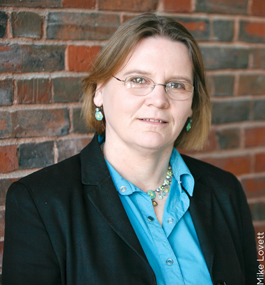Heller Study Paints Grim Retirement Picture for Some

IASP research director Tatjana Meschede
Only 4 percent of Latino seniors and 8 percent of African-American seniors have the resources to maintain economic security throughout their lives, compared to 25 percent of whites, according to a study released in September by the Heller School’s Institute on Assets and Social Policy (IASP) and the national policy center Demos. The new research, compiled in a report called “The Crisis of Economic Insecurity for African-American and Latino Seniors,” points to such practices as redlining (discrimination in financial services), segregation and workplace inequities to explain the dramatic disparity, showing how today’s seniors of color have been prevented over their life spans from acquiring the assets needed to prepare for a secure retirement. In response to these findings, the report makes the following recommendations:
- Ensure the strength and adequacy of the Social Security program.
- Sustain funding for support services that help seniors meet basic needs.
- Foster sustainable homeownership among seniors by prohibiting predatory loans and financial products, particularly in low-income neighborhoods of color and among older households.
“It is unacceptable, in a country committed to equality of opportunity, to have nine in 10 Latino senior households and more than eight in 10 African-American senior households suffer from retirement insecurity,” says Tatjana Meschede, research director at IASP and co-author of the IASP research director Tatjana Meschede report. “Our elected officials must summon the courage to acknowledge and combat the extreme racial inequities among American seniors.”
